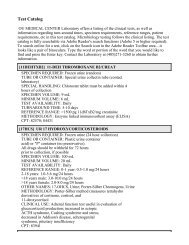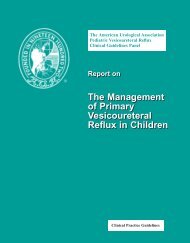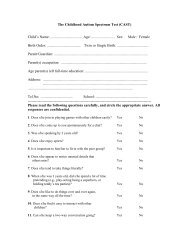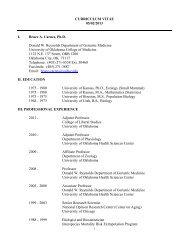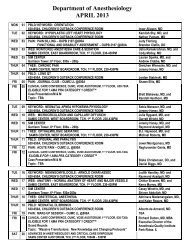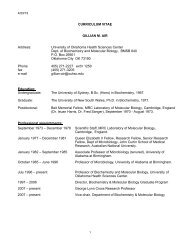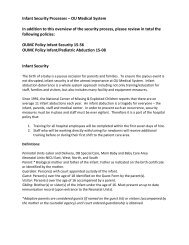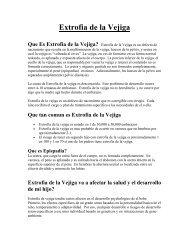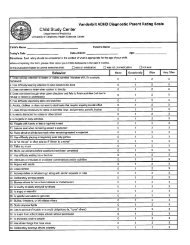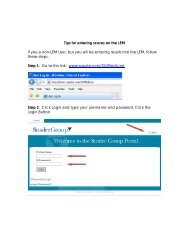Communities Advancing Resilience Toolkit (CART ... - OU Medicine
Communities Advancing Resilience Toolkit (CART ... - OU Medicine
Communities Advancing Resilience Toolkit (CART ... - OU Medicine
Create successful ePaper yourself
Turn your PDF publications into a flip-book with our unique Google optimized e-Paper software.
officially recognized boundaries that dictate significantly the flow of resources, natural<br />
boundaries created by terrain features, and traditionally recognized boundaries known to<br />
local residents.<br />
Step 2: Prepare additional survey questions and finalize the instrument. Review the<br />
<strong>CART</strong> survey instrument. Consider gathering additional organization- and communityspecific<br />
questions (e.g., perceptions about the adequacy of local shelters or the<br />
availability of educational opportunities in the community) that can be useful to your<br />
organization and community. Develop questions to gather this information, recognizing<br />
that people may not complete a lengthy questionnaire. Pilot test your survey instrument<br />
with friends or colleagues to be sure new questions are appropriately worded and to<br />
determine how long it takes to complete the survey.<br />
Step 3: Select the survey delivery method and the sample. The survey can be<br />
administered in person, over the telephone, through postal mail, or online. In<br />
determining which method to use, consider which method will reach the greatest number<br />
of subjects, generate the highest response rate, require the least time and skills for data<br />
entry and analysis, and cost the least to administer and analyze. A random sample of your<br />
community is ideal to the extent that it permits you to generalize from survey responses<br />
to the entire community, but some organizations do not have ready access to a database<br />
to generate such a sample at reasonable cost. Alternative, purposive samples may include<br />
a mix of community leaders, neighborhood members, selected professionals, and/or<br />
representatives of community organizations.<br />
Step 4: Invite participation in the survey. Prepare an introductory statement that you will<br />
use to invite participation in the survey. The introduction should include information<br />
about your organization and the purpose of the survey. You should explain how the<br />
results will be used and discuss confidentiality issues. <strong>CART</strong> survey results are generally<br />
presented for an entire sample or sub-samples so that identifying information about<br />
individual participants need not be collected and, if it is, should not be reported.<br />
Step 5: Implement the survey. Implement the survey in accordance with your chosen<br />
delivery method(s). Send follow-up requests for responses at least once after your initial<br />
contact and in accordance with a deadline you establish.<br />
<strong>Communities</strong> <strong>Advancing</strong> <strong>Resilience</strong> <strong>Toolkit</strong> (<strong>CART</strong>) Page 10



